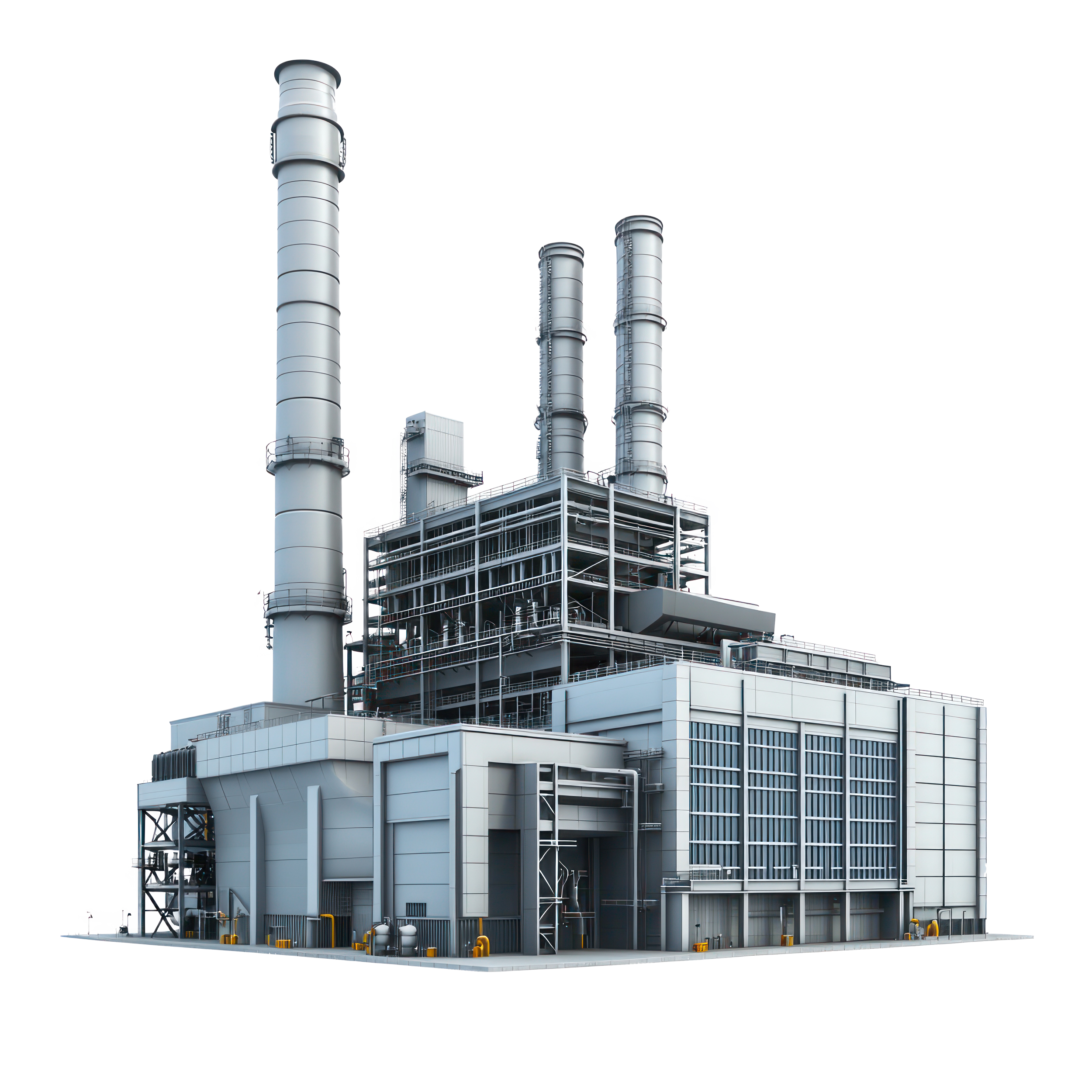Power Plants
Large Power Plants are defined in 18 AAC 50.400(i)(5) as a Title V source or one that operates under Alaska’s general permits for diesel engines that are used to generate electricity and contains a combustion turbine electric generator or natural gas-fired steam plant; or that has a potential to emit a total greater than or equal to 500 tons per year of regulated air pollutants in aggregate, and that contains emissions units used to provide power to a mine or military base.
Small Power plants are defined in 18 AAC 50.400(i)(10) as a Title V source that does not meet the definition of a large power plant. the purpose of a small power plant is to generate electricity and contains one or more diesel-fired internal combustion engines to generate power, used for seafood processing. They must have a potential to emit a total less than 500 tons per year of regulated air pollutants in the aggregate, and that contains emissions units used to provide power to a mine or military base.
40 CFR 60
Permittees must comply with applicable New Source Performance Standard (NSPS) provisions. NSPS requirements are included in the applicable requirement definition under 40 CFR 71.2, which has been adopted by the Department under 18 AAC 50.040(j)(1).
Large Power Plants may be subject to NSPS Subparts: A, J, GG, IIII, and KKKK for Reciprocating Internal Combustion Engines (RICE) and Combustion Turbines.
Subpart A: General Provisions
Subpart A outlines the general provisions applicable to all sources regulated under NSPS. This includes definitions, compliance requirements, performance testing, and monitoring requirements.
Subpart J: Standards of Performance for Fossil-Fuel Fired Steam Generating Units
Subpart J applies to larger diesel-fired power plants that use steam-generating units. This subpart includes emission limits for sulfur dioxide (SO2), oxides of nitrogen (NOx), and particulate matter (PM). It also specifies requirements for continuous emission monitoring systems (CEMS) and performance testing procedures.
Subpart GG – Stationary Gas Turbines
Subpart GG applies to stationary gas turbines with a heat input at peak load equal to or greater than 10 MMBtu/hr, constructed, modified, or reconstructed after October 3, 1977.
Emission Limits
NOx emissions must not exceed 150 ppm at 15% oxygen on a dry basis for gas-fired turbines.
SO2 emissions must not exceed 0.015% by volume at 15% oxygen on a dry basis.
Monitoring Requirements
Operators must monitor and report the fuel sulfur content and the nitrogen content for gaseous fuels. CEMS may be required for NOx and SO2.
Subpart IIII: Standards of Performance for Stationary Compression Ignition Internal Combustion Engines (CI ICE)
Subpart IIII is specifically relevant to diesel-fired power plants. It sets emission limits for NOx, PM, carbon monoxide (CO), and hydrocarbons (HC) for stationary compression ignition internal combustion engines. The standards vary based on the engine size and model year, and the regulations include requirements for testing, monitoring, and recordkeeping.
Subpart KKKK – Stationary Combustion Turbines
Subpart KKKK applies to stationary combustion turbines with a heat input at peak load equal to or greater than 10 MMBtu/hr, constructed, modified, or reconstructed after February 18, 2005.
Emission Limits
NOx emissions must not exceed 25 ppm at 15% oxygen on a dry basis for turbines firing natural gas.
CO emissions must not exceed 130 ppm at 15% oxygen on a dry basis for natural gas turbines.
Monitoring Requirements
Operators must use CEMS to continuously monitor NOx and CO emissions. Regular performance tests and reporting of data are required for compliance.
40 CFR 63
The Alaska Department of Environmental Conservation (ADEC) has incorporated by reference the National Emission Standards for Hazardous Air Pollutants (NESHAP) requirements for specific industrial activities, as listed in 18 AAC 50.040(c). NESHAP Subpart ZZZZ applies to owners and operators of any existing, new, or reconstructed stationary RICE located at major and area sources of Hazardous Air Pollution (HAP) emissions.
NESHAP Subpart ZZZZ: National Emission Standards for Hazardous Air Pollutants for Stationary Reciprocating Internal Combustion Engines (RICE)
Subpart ZZZZ regulates hazardous air pollutant emissions from stationary RICE, which include diesel engines used in power plants. The key requirements under this subpart include:
Emission Limits: Establishes emission limits for pollutants such as formaldehyde, acrolein, methanol, and other HAPs.
Operating Requirements: Specifies requirements for operating practices to minimize emissions, including work practice standards and management practices.
Monitoring and Testing: Mandates regular performance testing and continuous monitoring of emissions to ensure compliance with the standards.
Recordkeeping and Reporting: Requires detailed recordkeeping and reporting to the EPA to demonstrate compliance.
NESHAP Subpart YYYY: National Emission Standards for Hazardous Air Pollutants for Stationary Combustion Turbines
NESHAP Subpart YYYY applies to stationary combustion turbines used in power plants, including both simple cycle and combined cycle turbines. The key requirements under this subpart include:
Emission Limits: Sets emission limits for pollutants such as formaldehyde and other HAPs specific to combustion turbines.
Operating Requirements: Establishes requirements for proper operation and maintenance of turbines to control emissions.
Monitoring and Testing: Requires performance testing and CEMS to verify compliance with the standards.
Recordkeeping and Reporting: Mandates detailed records of emissions data, maintenance activities, and compliance reports to be submitted to the EPA.
40 CFR 64
Compliance Assurance Monitoring (CAM) provisions are required under 40 C.F.R. Part 64. These provisions apply to emission units that employ the use of an add-on control device to meet an emission limit or standard and have pre-control emissions greater than 100 TPY for the pollutant for which the control device is operated. CAM provisions can apply to large and small power plant emissions units due to the operation of a control devices such as Selective Catalytic Reduction (NOx controls).
CAM Requirements Under 40 C.F.R. 64
Monitoring Design Criteria: Power plants must establish and maintain monitoring systems that accurately reflect the operation and performance of their control devices. These systems should be capable of providing data that demonstrates compliance with the applicable emission limits.
Performance Criteria: The monitoring system must be designed to detect any deviation from the established standards. This includes identifying periods when the control devices are not operating optimally.
Quality Assurance: Regular maintenance and calibration of monitoring equipment are required to ensure data accuracy and reliability.
RecordKeeping: Detailed records of monitoring data, maintenance activities, and any corrective actions taken must be maintained for at least five years. These records should be readily available for inspection by regulatory authorities.
Reporting Requirements: Power plants must submit periodic reports to the EPA and/or ADEC, detailing the performance of their control devices and any deviations from compliance.
Corrective Action: Immediate steps must be taken to rectify any issues identified by the monitoring system. This includes implementing repairs, adjustments, or upgrades to control devices to restore compliance.
Steps to Implement CAM
Initial Assessment: Evaluate existing control devices and monitoring systems to determine if they meet CAM requirements.
System Design: Develop and implement monitoring systems tailored to the specific needs and characteristics of the power plant.
Training: Ensure that personnel responsible for operating and maintaining the monitoring systems are adequately trained.
Continuous Monitoring: Maintain ongoing monitoring and assessment to detect any deviations from compliance in real-time.
Documentation: Keep thorough records of all monitoring activities, data collected, and actions taken.
Title I Permit
Requirements
Permittees are required to comply with all stationary source-specific requirements that were carried forward from previous SIP-approved Permits to Operate issued on or before January 17, 1997 and operating permits issued between January 18, 1997 and September 30, 2004, and with all stationary source-specific requirements in EPA Prevention of Significant Deterioration (PSD) permits, State Implementation Program (SIP)-approved construction permits, SIP-approved minor permits, and owner requested limits established under 18 AAC 50.225.
These requirements include Best Available Control Technology (BACT) limits, limits to ensure compliance with the attainment or maintenance of ambient air quality standards or maximum allowable ambient concentrations, and owner requested limits.

